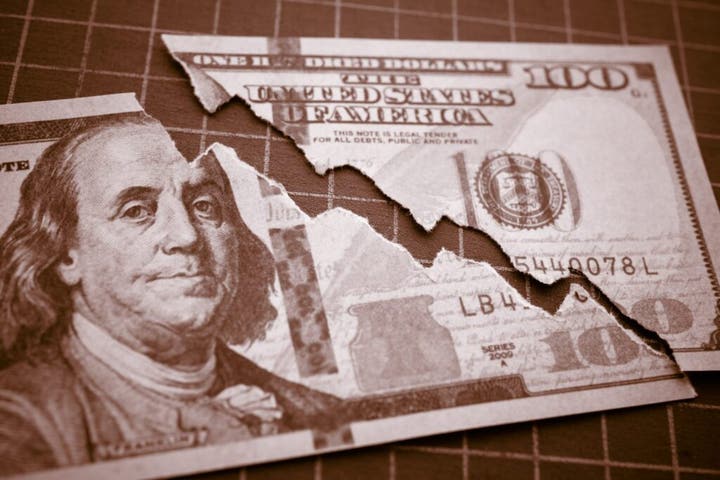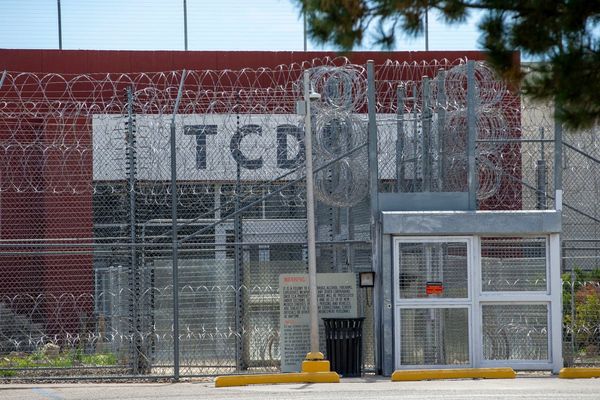
The dollar may have staged a short-lived comeback in July, climbing more than 3% after its worst first-half in decades, but its summer surge is quickly unraveling as stagflation fears resurface.
Through August 21, the U.S. Dollar Index — as tracked by the Invesco DB USD Index Bullish Fund ETF (NYSE:UUP) — has dropped over 1% month-to-date, reigniting a broader downtrend that Bank of America now believes is here to stay.
The bank's latest call? The dollar is heading lower again—fast.
US Heading For Stagflation?
The key reason for the bearish dollar outlook lies in the dreaded mix of softening labor data and stubbornly high inflation—an economic regime widely known as stagflation.
This toxic combination, characterized by weak growth and rising prices, has historically spelled trouble for the greenback, especially when the Federal Reserve leans dovish.
"Potential rate cuts amid increasing inflation creates fertile ground for dollar depreciation," said Bank of America strategist Alex Cohen in a client note shared Thursday.
With jobs weakening and inflation stubbornly high, the Fed could slash rates into a rare stagflationary storm—an unusual twist in modern U.S. economic history.
Bank Of America Sees Euro Above 1.20 Dollars
The dollar’s current weakness has prompted Bank of America to revise its forecast on the euro-dollar exchange rate.
The bank now expects the euro-dollar pair to reach 1.20 by year-end, up from current levels near 1.16.
By 2026, the pair could rally to 1.25, which would imply a nearly 25% surge from early January 2025 levels.
Dollar Faces Structural Risks As Fed Independence Is At Stake
While monetary policy is the most obvious driver, deeper structural issues are also at play.
Bank of America highlights ongoing changes in U.S. institutional credibility that could shake foreign confidence in American data and governance.
"Risks to Fed independence are well recognized, but the market now needs to contemplate the implications of institutional erosion at statistical agencies as well," Cohen said.
U.S. President Donald Trump continues to pressure Fed Chair Jerome Powell to cut interest rates. Treasury Secretary Scott Bessent stated that rates remain 150 to 175 basis points higher than where he says they should be.
Clients at Bank of America are also increasingly raising concerns about the politicization of the Federal Reserve and government data agencies, and its potential market consequences.
Earlier this month, Trump fired the Bureau of Labor Statistics commissioner after a bleak July jobs report that included downward revisions for May and June. His replacement, EJ Antoni, signaled that official employment data may shift to a quarterly release schedule.
According to Bank of America in a scenario where U.S. inflation data becomes less reliable or visibly politicized, investors could brace for looser monetary policy, higher inflation, and a steeper yield curve—all of which would weigh heavily on the dollar.
What Happens If Sticky Inflation Persists?
There is a caveat to the dollar's bearish outlook: if inflation proves even stickier and forces the Fed to push back against easing expectations, the greenback could enjoy another temporary rally. But Bank of America believes any such rally would likely be short-lived.
"Even if near-term easing gets pushed back further, the USD will likely still struggle to meaningfully rally, as has been the case all year," Cohen added.
In a more stagflationary environment, Bank of America expects lower real and nominal U.S. interest rates, a steeper yield curve, and stronger performance in commodities and large-cap value stocks—a scenario where the dollar continues to weaken.
Now Read:
Image: Shutterstock







